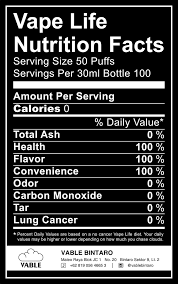Electronic smoking has gained health popularity as of recently with many people using e-cigarette or vaporizers as vaping devices as an option to smoking normal cigarettes. But in addition to the mushroom of vapor and myriad of cigarette flavors, one question E-cigarettes and vape pens have gained much popularity in the current society as an effective way to help people quit smoking or as an indirect way of averting the negative impacts of conventional cigarettes. But beyond the clouds of vapor and endless flavor options, one question arises: One question you will frequently come across when analyzing vaping is, ‘how many calories are in a vape?’ This might not sound like a big deal for a health oriented person, and yet it might be something to consider.
What Is Vaping?

Of a nicotine-based drug, vaping is the act of drawing vapor from an electronic device such as a vape pen or e-cigarette into the lungs and expelling it. These devices warm-up a liquid called e-liquid or vape juice which involves nicotine, flavors and other compounds such as propylene glycol or vegetable glycerin. Unlike the normal cigarettes that burn tobacco causing the production of deadly tars and carcinogen, vaping injects nicotine in the system without combustion.

But with the appearance of vaping, a lot of people have asked themselves whether it has got any calories that could be dangerous to those with weight loss plans, among others.
The Ingredients of Vape Juice

But with that, let’s first familiarize ourselves with some of the ingredients that make up vape juice. The most common ingredients include:
- Propylene Glycol (PG): A solvent that has no given colour, smell and is widely used in most e- liquids. It gives out the ‘throat hit’ that smokers appreciate so much. Smoke electronic cigarettes generate the throat hit that smokers value so much. Most of the food and drug regulatory bodies in the world consider it to be safe and it has very few calories.
- Vegetable Glycerin (VG): This thicker liquid is used in making large volumes of vapor fog as will be seen from the following description. VG comes from vegetable oils while, as previously indicated, it has energy content or 4 kcal/g approximately the same as carbohydrates.
- Flavorings: These can range from fruity to dessert-like flavor. Natural and food-grade additives are also used sparingly in concoctions, and their energy value, in most cases, is trivial.
- Nicotine: While it is the addictive element, nicotine has little or no caloric value on its own; this is additive in cigarettes.
- Additives: Some levels of e-liquids may have ingredients like sweeteners and may even have energy value though due to small quantities, the contribution is negligible.
Do Calories in Vape Juice Matter?
Technically, some vape juices contain calories because of ingredients like vegetable glycerin, but here’s the key question: That said, do you consume these calorie amounts when vaping?

The e-liquid is the substance which is being heated through the atomizer to produce a vapor that you then inhale as you vape. Vaporization is a process that means the liquid does not remain in the same form as when you decide to have your food or a beverage hence the calorie content is not the same. It is inhaled rather than to be ingested and assimilated in your body since most of the metals remain in the vapor form.
Therefore, though VG has calories, they are not actually assimilated in the usual sense. Both VG and the flavorings add very few calories which should not influence the overall calorie intake in the day.
Calories in a Puff: Breaking It Down

To better understand, let’s dissect the contingency theories of management. The propylene glycol content is, for instance, usually makes up 70-80% of the typical e-liquid. This means that, If a 10ml bottle of e-liquid has 70% VG, that is equal to 7 ml of VG.
Vegetable glycerin has about 4 Calories per gram. VG is quite dense, 1 ml of VG will be around 1.26 gm, so 7 ml of VG will be around 8.82 gm. Take that figure and multiply it by 4 calories per gram and get approximately 35 calories in a whole 10ml bottle of e-liquid.
But keep in mind that you don’t actually eat or drink the e-liquid, you merely inhale it with a cigarette or electronic cigarette. As you take a puff, more than 90% of that liquid is atomized into an aerosol, then exhaled. But then again, yes there are indeed calories in vape juice but the amount that gets to be absorbed into your body is as good as none.
Generally, the amount of e-liquid in a puff taken from the vape pen is likely to be less than 1 calorie or even none at all.
Comparing Vaping to Eating and Drinking
In an effort to view this in perspective, a 30ml bottle of e-liquid has an approximate of 30-50 calories depending on the size as well as VG/PG ratio. Look at a can of soda – 150 calories or even a slice of pizza which could be more than 150 calories.

Imagine if you could put all e-juice that you have in the bottle and vape it; you would only be consuming mere calories, a feat that would not even be achievable because vaping has been proven to be a healthier alternative to smoking and will never come close to the content of calorific value contained in most of the foods or even drinks. From the perspective of the average vaper, it simply can’t be that much that it is practically negligible in terms of the overall caloric intake of any human being.
Should You Worry About Calories in a Vape?

When you are focusing on tracking calories, if you are trying to lose weight or exercise, then you don’t have to worry about calorie content in vape juice. Such a quantity is absorbed through the mouthpiece that you may never even get to know the taste of nicotine or experience its effects on your caloric intake.
Nevertheless, as it has been shown, vaping all but can have no caloric consequence at all, despite it having certain health risks. It contains nicotine, which is an addictive substance and side effects of vaping are still under research. Thus, unlike what many people think, vaping doesn’t necessarily cause weight gain – but that is beside the point.
Potential Health Impacts Beyond Calories

While we’ve established that the caloric impact of vaping is minimal, there are other health-related issues worth mentioning:
- Nicotine Addiction: Flavouring is still present, and vaping still involves the use of nicotine, a substance, which is addictive. Chronic use results in dependence on the product and the inability to quit more often because of the ingredient they contain.
- Lung Health: There is still much that is unknown on just how vaping impacts the lungs of users in the long term. Cases of lung issues have been reported on some vaping products, but these seem to be related to illicit or a non regulated products.
- Chemical Exposure: While it is true that e-liquids do not contain many of the same carcinogenic chemicals found in regular tobacco cigarettes, they are not totally innocuous, either. Of course, some of the types of flavors and additives may be unhealthy for consumption even if these are not toxic in moderate amounts, but when used in large concentrations, they may cause some harm in the long run.
Conclusion: Should You Be Concerned?
In terms of calorie consumption, there is no reason to be concerned about vaping. Still for those who follow their diet and calories the small amount of calories that one can find in e-liquids does not cause any changes. Of course, there are other health concerns that come from vaping including the issue of getting addicted to nicotine and the lung health consequences that come with vaping.
Well, then, if you’ve been wringing your hands trying to figure out if your vape was contributing another thirty or so calories to your day, then you can breathe. Vaping is not about consuming calories, but anything to do with health always requires, moderation and consciousness.
Summary: How Many Calories Are in a Vape?
Last, despite the fact that some vape juice has calories from vegetable glycerin, it is very little that cannot realistically impact the number of calories an individual consumes. In simple terms, if you count your calories, you should know that one puff from a vape pen is less than 1 calorie for most varieties.

